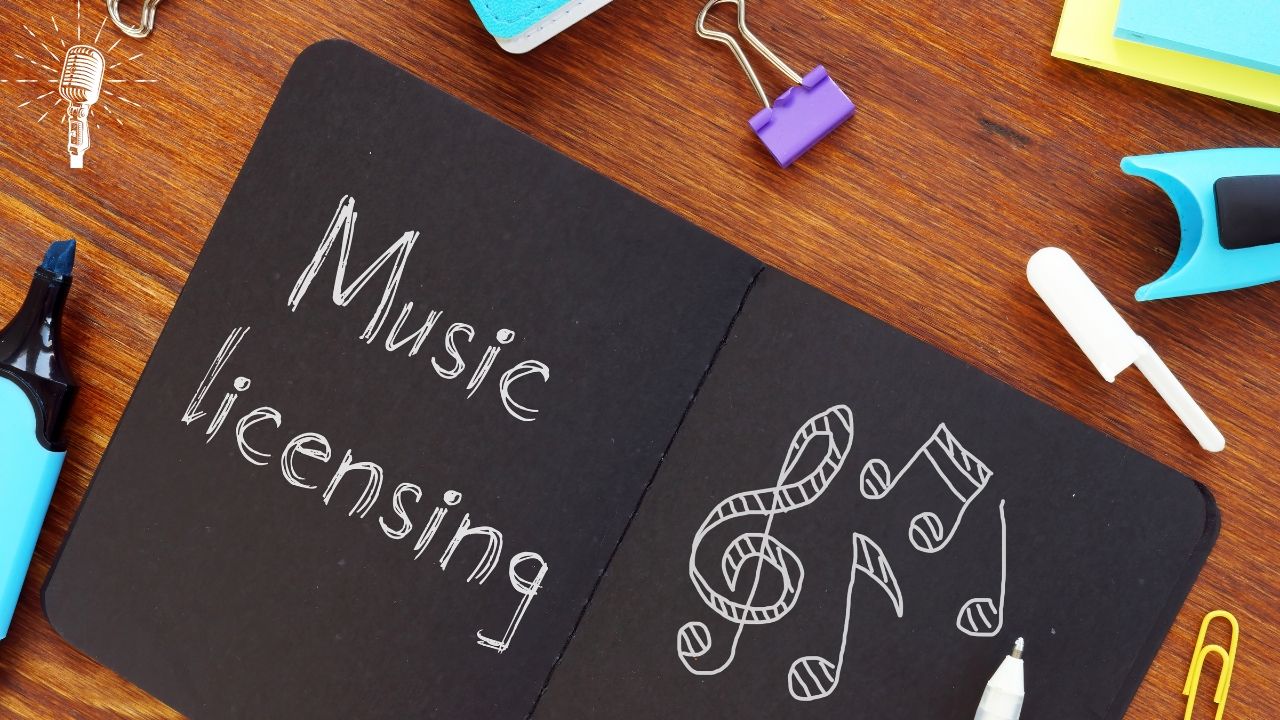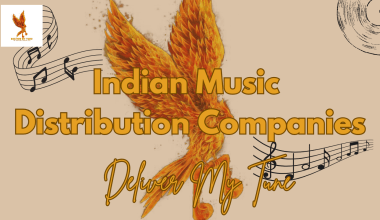Music licensing is a crucial aspect of the music industry that ensures artists are compensated for their work. It involves granting permission to use a piece of music in various forms such as films, TV shows, commercials, and other media. Understanding the intricacies of music licensing can help artists protect their work and generate income from their creations. In this comprehensive guide, we will explore the key concepts and practices in music licensing, providing valuable insights for artists, producers, and anyone involved in the music industry.
What is Music Licensing?
Music licensing refers to the process of obtaining permission from the copyright holder to use music in various media. This permission is granted through a license, which specifies the terms and conditions under which the music can be used. There are several types of music licenses, each serving different purposes and covering different uses of music.
Types of Music Licenses
- Synchronization (Sync) License
- A sync license allows the licensee to synchronize music with visual media such as movies, TV shows, advertisements, and video games. This type of license is essential for incorporating music into audiovisual projects.
- Mechanical License
- A mechanical license is required when music is reproduced and distributed, such as in CDs, vinyl records, and digital downloads. It ensures that the songwriter and publisher are compensated for the reproduction of their music.
- Public Performance License
- This license is needed when music is played publicly, such as in concerts, radio broadcasts, restaurants, and retail stores. Organizations like ASCAP, BMI, and SESAC manage public performance licenses in the United States.
- Master Use License
- A master use license allows the licensee to use a specific recording of a song. This is often required in conjunction with a sync license if the actual recording (rather than a cover) is used in a project.
- Print License
- A print license is necessary for reproducing sheet music or lyrics. This is common in educational settings and for selling sheet music to the public.
Importance of Music Licensing
Music licensing is vital for several reasons:
- Protecting Intellectual Property: It ensures that the rights of the creators are protected, preventing unauthorized use of their work.
- Revenue Generation: Licensing music can be a significant source of income for artists, songwriters, and producers.
- Legal Compliance: It helps users of music comply with copyright laws, avoiding legal disputes and penalties.
- Creative Collaboration: Proper licensing allows for creative collaborations while respecting the rights of all parties involved.
How Music Licensing Works
The Licensing Process
- Identify the Rights Needed
- Determine which rights are necessary for your project. This could include sync rights for a film, public performance rights for a concert, or mechanical rights for a CD production.
- Find the Rights Holder
- Identify the copyright holder of the music. This could be the songwriter, publisher, or record label. Organizations like ASCAP, BMI, and SESAC can help identify rights holders.
- Negotiate the License
- Negotiate the terms of the license, including the duration, territory, and fee. The cost of a music license can vary widely depending on factors such as the popularity of the song and the scope of use.
- Draft the License Agreement
- Create a written agreement outlining the terms and conditions of the license. This should be signed by both parties to make it legally binding.
- Pay the Licensing Fee
- Pay the agreed-upon fee to the rights holder. This fee compensates the creator for the use of their work.
Licensing Agencies and Organizations
Several organizations manage music licensing and help artists collect royalties. Some of the most prominent include:
- ASCAP (American Society of Composers, Authors, and Publishers)
- Manages public performance rights and collects royalties on behalf of its members.
- BMI (Broadcast Music, Inc.)
- Similar to ASCAP, BMI manages public performance rights and ensures artists receive royalties for their work.
- SESAC (Society of European Stage Authors and Composers)
- A performance rights organization that manages public performance licenses and collects royalties.
- Harry Fox Agency
- Specializes in mechanical licensing and royalty collection in the United States.
Challenges in Music Licensing
Music licensing can be complex and challenging due to various factors:
Identifying Rights Holders
One of the primary challenges is identifying the correct rights holders. Music can have multiple rights holders, including songwriters, publishers, and record labels. Properly identifying and obtaining permissions from all parties involved can be time-consuming and complicated.
Negotiating Fair Terms
Negotiating the terms of a license can be challenging, especially for independent artists or small production companies. The cost of licenses can vary significantly, and negotiating a fair price that fits within a budget while ensuring the artist is fairly compensated requires skill and knowledge.
Managing Royalties
Collecting and distributing royalties is another challenge in music licensing. Ensuring that all parties receive their fair share of the royalties can be complex, especially with international usage and various licensing agreements.
Legal Compliance
Ensuring legal compliance with copyright laws and licensing agreements is crucial. Failure to comply can result in legal disputes, fines, and damage to one’s reputation. Staying updated with ever-changing copyright laws and regulations is essential for all parties involved in music licensing.
Best Practices for Music Licensing
To navigate the complexities of music licensing effectively, consider the following best practices:
Research Thoroughly
- Know Your Rights: Understand the different types of music licenses and which ones are relevant to your project.
- Identify Rights Holders: Use resources like ASCAP, BMI, and SESAC to identify rights holders and ensure you are negotiating with the correct parties.
Negotiate Clearly
- Transparent Communication: Communicate your needs clearly and negotiate terms that are fair to both parties.
- Get It in Writing: Always have a written agreement outlining the terms and conditions of the license. This protects both parties and provides a clear reference in case of disputes.
Maintain Records
- Keep Documentation: Maintain detailed records of all licensing agreements, payments, and communications. This helps in tracking royalties and ensuring compliance.
- Track Usage: Monitor the usage of licensed music to ensure it adheres to the agreed terms.
Stay Updated
- Follow Industry Trends: Stay informed about changes in copyright laws, licensing practices, and industry trends. This helps in making informed decisions and staying compliant.
- Continuous Learning: Attend workshops, webinars, and industry events to enhance your understanding of music licensing.
Use Licensing Agencies
- Professional Assistance: Consider using licensing agencies or professionals who specialize in music licensing. They can help navigate the complexities and ensure all legal aspects are covered.
Real-World Examples of Music Licensing
Understanding music licensing can be further enhanced by looking at real-world examples. Here are a few cases that highlight the importance and impact of music licensing:
Example 1: The Use of Music in Films
When a filmmaker wants to use a popular song in a movie, they must obtain a synchronization license from the copyright holder. For instance, the movie “Guardians of the Galaxy” is known for its iconic soundtrack, which includes many classic hits. The producers had to secure sync licenses for each song to legally include them in the film. This process involves negotiations and payment of licensing fees to the rights holders, ensuring that the artists and composers are compensated for the use of their music.
Example 2: Cover Songs on YouTube
Many artists on YouTube create cover versions of popular songs. To do this legally, they need a mechanical license, which allows them to reproduce and distribute the original song. Platforms like YouTube often handle this by partnering with organizations such as the Harry Fox Agency to manage these licenses and ensure that the original creators receive royalties.
Example 3: Commercials and Advertisements
Companies often use popular music tracks in their commercials to enhance their marketing campaigns. For example, Apple’s use of the song “New Soul” by Yael Naim in their MacBook Air commercial significantly boosted the song’s popularity. To use the track, Apple had to obtain a sync license, which involved negotiating terms and fees with the rights holders. This licensing agreement ensured that Naim was compensated for the commercial use of her song.
The Role of Technology in Music Licensing
Technology has significantly impacted the music licensing landscape, making it easier for artists and rights holders to manage their licenses and royalties. Here are some ways technology is shaping music licensing:
Digital Rights Management (DRM)
DRM technologies help protect copyrighted music by controlling how it is used and distributed. These technologies prevent unauthorized copying and sharing, ensuring that only licensed users can access and use the music. DRM plays a crucial role in digital music platforms like Spotify and Apple Music, where millions of tracks are streamed daily.
Licensing Platforms
Online platforms such as Songtradr, Musicbed, and Audio Network provide a marketplace for music licensing. These platforms connect artists with potential licensees, making it easier to negotiate and secure licenses. They offer a wide range of music for various uses, from films and commercials to online videos and podcasts.
Blockchain Technology
Blockchain technology is emerging as a promising solution for managing music rights and royalties. By providing a decentralized and transparent ledger, blockchain can ensure that all transactions are recorded accurately and that royalties are distributed fairly to all rights holders. This technology can reduce disputes and increase trust between artists, rights holders, and licensees.
Common Misconceptions About Music Licensing
Despite its importance, music licensing is often misunderstood. Here are some common misconceptions and the truth behind them:
Misconception 1: All Music Can Be Used Freely Online
Many people believe that any music available online can be used freely in their projects. This is not true. Most music is protected by copyright, and using it without proper licensing can lead to legal issues and financial penalties. It is essential to obtain the appropriate licenses before using any copyrighted music.
Misconception 2: Licensing is Only for Commercial Use
Another common misconception is that music licensing is only necessary for commercial projects. In reality, any public use of music, whether for commercial purposes or personal projects like YouTube videos, requires proper licensing. This includes covers, remixes, and background music for events.
Misconception 3: Getting a License is Too Complicated and Expensive
While the licensing process can seem daunting, there are resources and services available to simplify it. Licensing agencies and online platforms can help negotiate terms and fees, making it more accessible and affordable for independent artists and small businesses.
Misconception 4: Attribution is Enough
Some people think that simply crediting the artist is enough to use their music legally. While attribution is essential and often required by the license, it is not a substitute for obtaining the proper license. You must still get permission and pay any associated fees to use the music legally.
Future Trends in Music Licensing
The music industry is constantly evolving, and music licensing is no exception. Here are some trends that are shaping the future of music licensing:
Increased Use of Artificial Intelligence
Artificial intelligence (AI) is becoming more prevalent in the music industry. AI can help in identifying copyrighted music used without permission and automate the licensing process. For example, YouTube’s Content ID system uses AI to detect copyrighted music in videos and manage licensing automatically.
Growth of Micro-Licensing
Micro-licensing is a trend where music is licensed for small-scale projects at lower costs. This is particularly popular among independent content creators, such as YouTubers and podcasters, who need affordable music for their projects. Micro-licensing platforms provide a vast library of music tracks that can be licensed quickly and at a reasonable price.
Blockchain for Transparent Royalties
As mentioned earlier, blockchain technology promises to revolutionize music licensing by providing a transparent and decentralized way to manage rights and royalties. This can ensure that all parties are fairly compensated and reduce the potential for disputes.
Expansion of Music Licensing Markets
The global reach of digital platforms has opened up new markets for music licensing. As streaming services and social media platforms expand, there is a growing demand for licensed music in regions such as Asia, Africa, and Latin America. This presents new opportunities for artists to license their music to a broader audience.
Steps for Artists to Protect Their Music
For artists, protecting their music and ensuring they receive fair compensation is crucial. Here are some steps artists can take to safeguard their work:
Register Your Music
Register your music with copyright authorities in your country. In the United States, this is the U.S. Copyright Office. Registration provides legal proof of ownership and makes it easier to take legal action if your music is used without permission.
Join a Performance Rights Organization (PRO)
Joining a PRO like ASCAP, BMI, or SESAC can help you manage your public performance rights and collect royalties. These organizations monitor public performances of your music and ensure you are compensated.
Use Licensing Platforms
Utilize music licensing platforms to market your music for licensing opportunities. These platforms can help you reach potential licensees and manage the licensing process efficiently.
Monitor Your Music
Regularly monitor the use of your music to ensure it is not being used without permission. Tools like YouTube’s Content ID can help identify unauthorized use of your music online.
Work with Legal Professionals
Consider working with an entertainment lawyer or licensing professional to navigate the complexities of music licensing. They can help you negotiate fair terms and ensure your rights are protected.
Case Study: The Impact of Music Licensing on an Independent Artist
To illustrate the importance of music licensing, let’s look at a case study of an independent artist who successfully navigated the licensing process.
Case Study: John Doe’s Licensing Success
John Doe, an independent musician, created a unique song that gained popularity on social media. Recognizing the potential for his music to be used in various media, John decided to explore licensing opportunities.
Step 1: Registration and PRO Membership
John registered his song with the U.S. Copyright Office and joined ASCAP to manage his public performance rights. This ensured that he had legal proof of ownership and could collect royalties for public performances.
Step 2: Using Licensing Platforms
John uploaded his song to a music licensing platform, making it available for licensing in films, commercials, and online videos. He provided detailed information about the song, including its genre, mood, and potential uses.
Step 3: Securing a Sync License
A film producer discovered John’s song on the licensing platform and decided to use it in an upcoming movie. The producer contacted John through the platform, and they negotiated a sync license. The agreement specified the duration, territory, and fee for using John’s song in the film.
Step 4: Collecting Royalties
As the movie gained popularity, John’s song was played in theaters, on TV, and on streaming platforms. Thanks to his membership with ASCAP, John received royalties for each public performance of his song.
Step 5: Monitoring and Enforcement
John used online tools to monitor the use of his music. When he discovered unauthorized use of his song in a YouTube video, he filed a copyright claim through YouTube’s Content ID system. The platform promptly addressed the issue, ensuring that John received compensation for the unauthorized use.
Outcome
By taking proactive steps to license his music and protect his rights, John not only generated significant income but also gained exposure for his music. His success demonstrates the importance of understanding and navigating music licensing effectively.
Conclusion
Music licensing is a fundamental aspect of the music industry that protects the rights of creators and enables them to monetize their work. By understanding the key concepts and best practices in music licensing, artists, producers, and media creators can ensure they are legally compliant, fairly compensated, and able to collaborate creatively. Whether you are an artist looking to license your music or a producer seeking to use music in your projects, navigating the world of music licensing effectively can significantly impact your success in the industry.
Related Article:
- Learn more about Music Distribution Services to get your music on Spotify.
- Check out our Artist Guide for tips on how to upload music on Spotify.
- Explore our Social Media Management Services to enhance your online presence.
For additional resources on music marketing and distribution, visit Deliver My Tune






